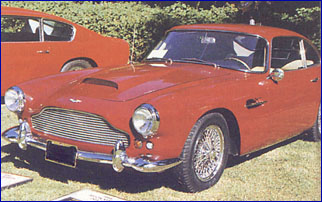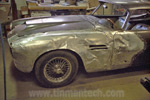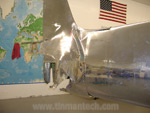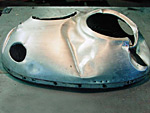Welding Aluminum Body Sheet Part 3
Welding Aluminum Body Sheet Part 3
Adhesion Coatings and Fillers
So we've straightened and welded the aluminum-now how do we get the coatings to stick? Back in the early '70s, before the tested, comprehensive finishing systems of today, it seemed to he both a crap-shoot and a big chore to get an aluminum car painted. One of the popular sayings regarding fillers that I heard hack then was: "If it don't stick the first time, it'll always stick the second." Oh, boy! Real science.
It took a while for me to figure out that aluminum body sheet oxidizes very quickly, so I wasted my time cleaning and sanding the night before I would be applying filler or primer. I finally narrowed the process down to cleaning the aluminum a maximum of 20 minutes prior to coating. When I kept to that maximum, I had no more problems with adhesion.
By 1983, I had a great system for doing extremely valuable vintage racing cars:
(1) Finish all the metal work.
(2) Solvent-wash and spray with a catalyzing etching primer over all the different metals.
Then I found a really hard etching urethane primer over which we could apply small amounts of plastic filler. This discovery allowed us to avoid sanding the .050 and .040 thick aluminum bodies down to .020 with 240, 320 and 400 sandpaper.
|
|
Now our trailblazer path has become a four-lane turnpike, with the official system teams in place today including etching hard primers, super fillcoats, and best of all, great color matching capabilities.
Here's a myth that has been "de-mythtified": The heat from plastic filler warps panels. Why does the
application of plastic body filler cause some flat panels to go down? If the panel has been worked
and/or ground down to the extent that it is somewhat loose, weak or lacks support, the contractive power
of the plastic pulls the top side in on itself driving it down.
On a hood or lid, I try to shim the framework a bit for support, or I sand the backside and apply filler
there, too, so as to balance the contractive forces. Many body men have told me that they thought it was
the heat of the plastic that warped the panel. However, I tested both the contraction and heat theories,
and eliminated the heat theory by applying the plastic at 34 degrees F. with excess hardener to
compensate for the temperature extreme. The heat from sunlight, however, while greater than that of
catalyzing plastic, has no such warping effect on the same panel.
Alodine/Chromate
Long a tradition in aluminum primers, zinc chromate is still employed in aircraft production. The only drawback to this type of primer is the potential for excessive film thickness. Application should be heavy enough to color somewhat- yet not color completely- because water absorption into the film coating can occur with heavy coats. Carefully follow the manufacturer's instructions for the use of their product.
Alodine as an industrial process is reliable and durable. However, for hoods, fenders, etc. being repaired in a shop environment, I have not found it completely reliable. There may be some alodine product we haven't tried, that would allow efficient application in the shop and could be reliably overcoated with primer, filler and surfacers. But, generally speaking, 'If it doesn't stick the first time, it will the second" with the alodines we've experienced.
Sources for Continuing Education
There's nothing like a good shot of adult education for picking up welding skills. High schools and community
colleges have great programs for MIG, TIG and perhaps torch basics. Aluminum is certainly not hard to
weld-I actually prefer to steel.
More information can be obtained from Publication AT1 from the Aluminum Association. Published in March
1994, the 16-page booklet is titled
Repair of Automotive Sheet by Welding.
Their comprehensive technical manual
Welding Aluminum: Theory and Practice
has enough information to solve any puzzle I can imagine, and I would highly recommend their Aluminum Welding
Seminar held periodically around the U.S. Contact the Aluminum Association at:
American Welding Society
550 N. W LeJeune Road
Miami, FL 33126
(800) 443-9353
This article is a brief summation of my 25 years doing aluminum body repair, rebuilding and fabrication. All aspects have been thoroughly researched. My apologies for taking a year to get it out- I hope the depth and detail will be of benefit to you.
Kent White received much of his training at Harrah `s Auto Collection where he earned the Master Technician title. He worked on automobiles and aircraft at Harrah '5 before opening his own business, The TM Technologies. He has spent 20 years honing his skills on his own work and by seeking out, and training with, many of the great craftsmen in the metalworking world. TM Technologies offers metalwork mg tools, instructional videos, consultation and workshops. For information and a free catalog call (530) 292-3506 or write TM Technologies at P.O Box 762, North San Juan, CA 95960.
Back to Articles by the Tinman





